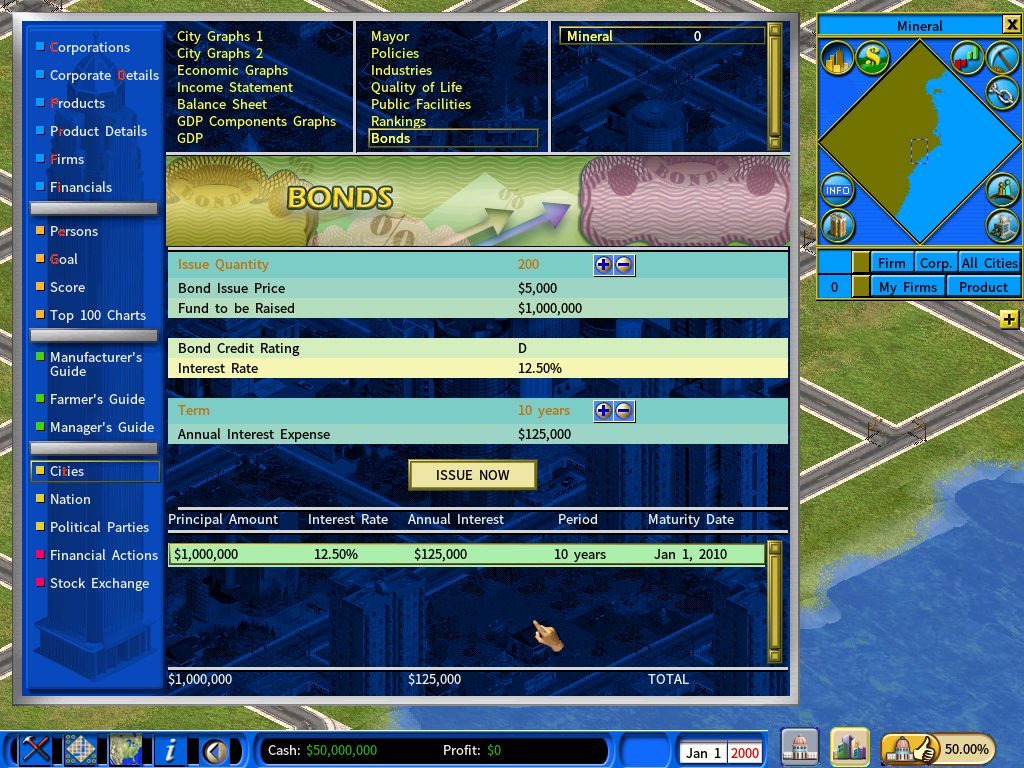Ultra-realistic City Economic Simulation
The city simulation in this DLC has been greatly enhanced. A new simulation model has been devised and implemented which simulates new aspects of a city like quality of life, the city’s competitiveness in individual industries, the city government finance, GDP and its components, a tax system and many others, as detailed below.
To allow for such a sophisticated simulation model to function, there is a host of new programming code added for simulating citizens and that requires longer CPU processing time and greater precision in simulation data. To accommodate that, in this DLC, a city’s population is approximately one-tenth of that of a city in the normal game mode without the DLC. For instance, you may expect to see a city with a population of 500,000 in a game using this DLC, as opposite to a city with 5 million people in the normal game.
The supply and demand figures of retail, manufacturing, farming and natural resources have thus been adjusted accordingly to accommodate the new settings.
We believe that overall the gameplay experience will remain solid. With the addition of the whole new array of city simulation elements, it should provide a refreshing gameplay experience to players who are already familiar with the game.
You may access the City Report from the Information Center. It contains a number of sections which are described in detail below.
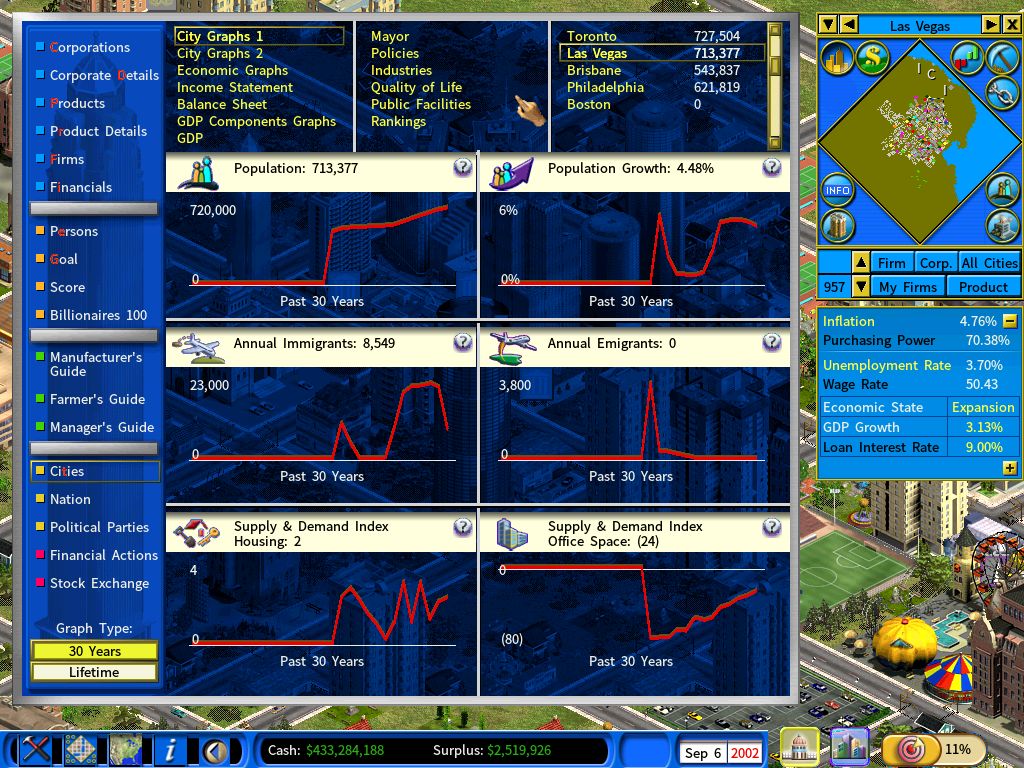
This shows the city’s population changes over time.
City Population Growth
A city’s population growth is supported by a low employment rate, high quality of living, and sufficient supplies of new apartments.
Annual Immigrants
The number of immigrants to the city annually.
Annual Emigrants
The number of people emigrated from the city annually.
Housing Supply and Demand Index
A positive value means that the housing supply is greater than the housing demand, and vice versa.
Office Space Supply and Demand Index
A positive value means that the office space supply is greater than the office space demand, and vice versa.
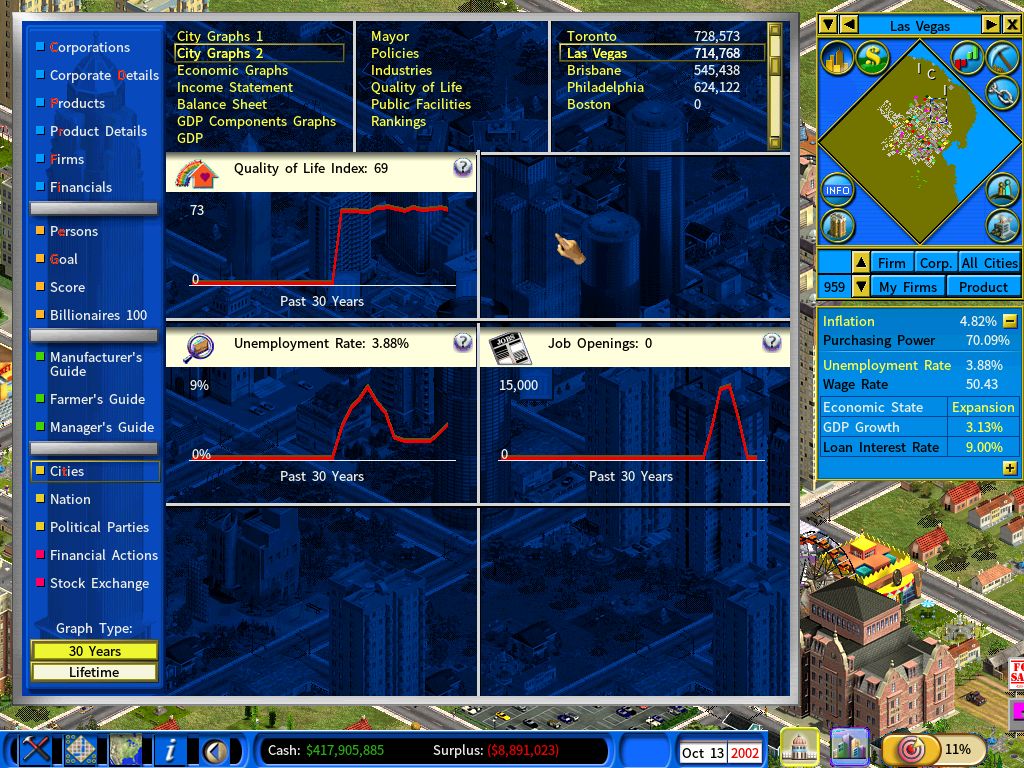
People enjoy their lives better when they live in apartments with good access to community and sports facilities, a green environment and good shopping convenience, as well as a higher real wage rate.
The unemployment rate trends lower when the GDP growth is healthy and private companies are expanding and creating new jobs.
Generally, when there is a large number of job openings available in the city, the city can afford to accept immigrants at a faster pace.
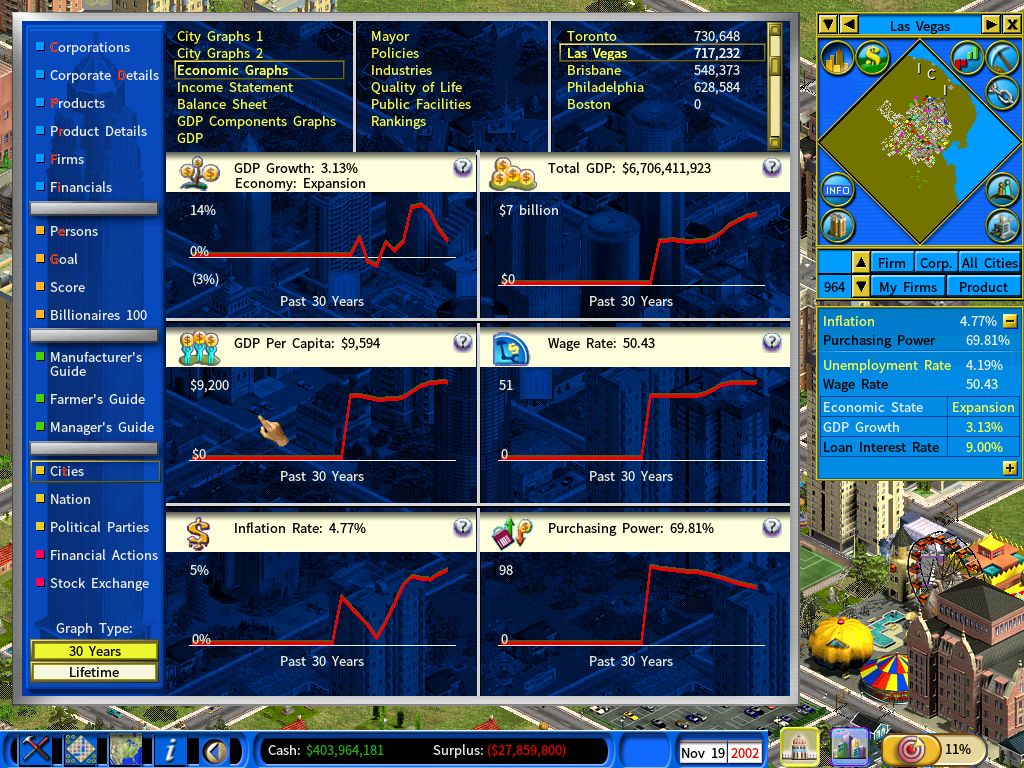
GDP growth is affected by consumer spending, private investment, government spending and net exports.
The total GDP is the sum of the consumption, private investment, government spending and net exports.
This value indicates the approximate value of goods produced per person in the city. It equals to the total GDP divided by the total number of people in the city.
A growing wage rate means that people are earning more money.
The inflation rate is affected by the unemployment rate (people spend less when they are unemployed) and the money demand and supply (higher money supply promotes spending).
Purchasing power is the amount of goods or services that one can buy with a unit of currency. Inflation erodes purchasing power.
It shows the income statement of the city government.
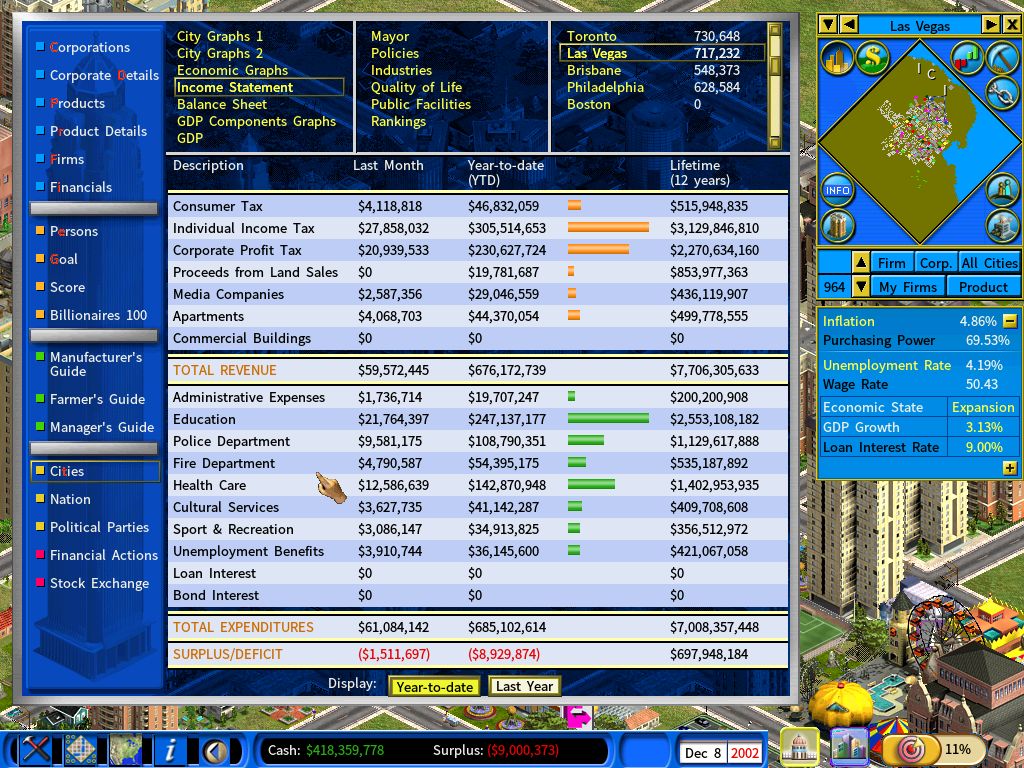
It shows the balance sheet of the city government.

GDP is the sum of consumption, investment, government spending and net exports.
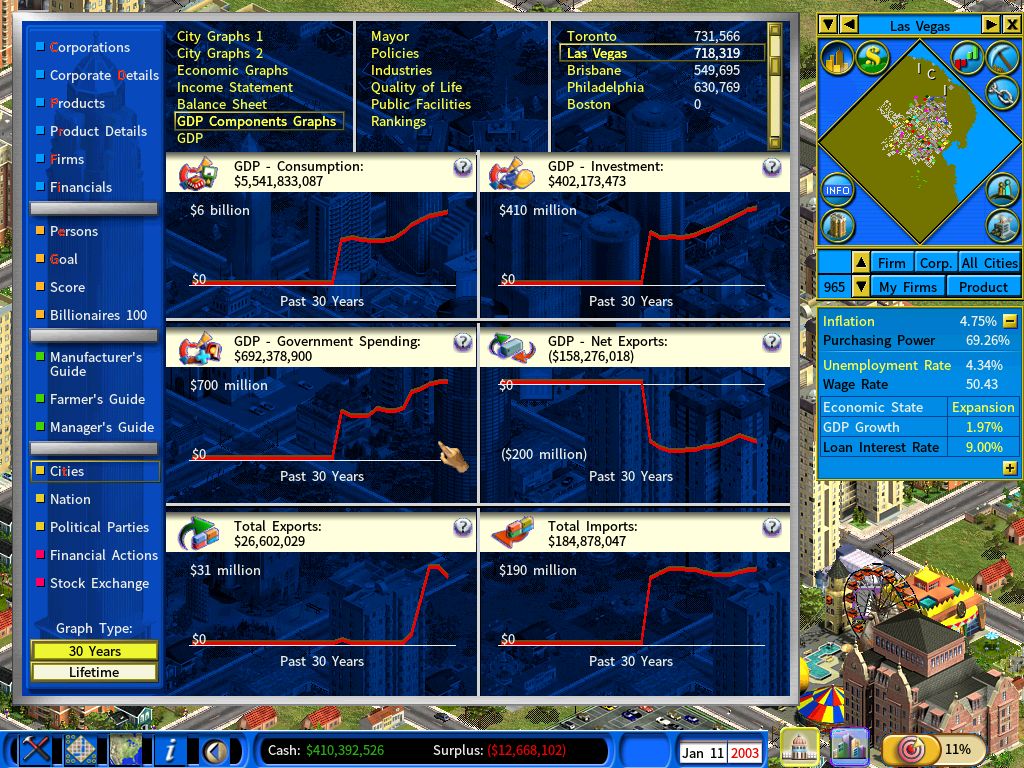
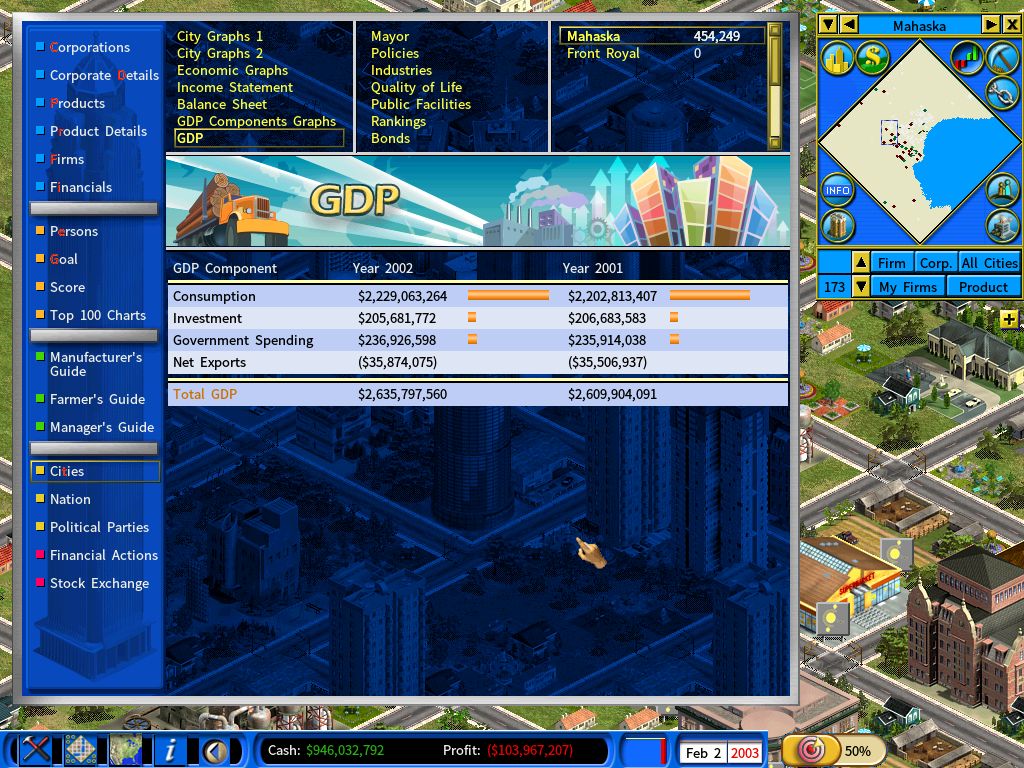
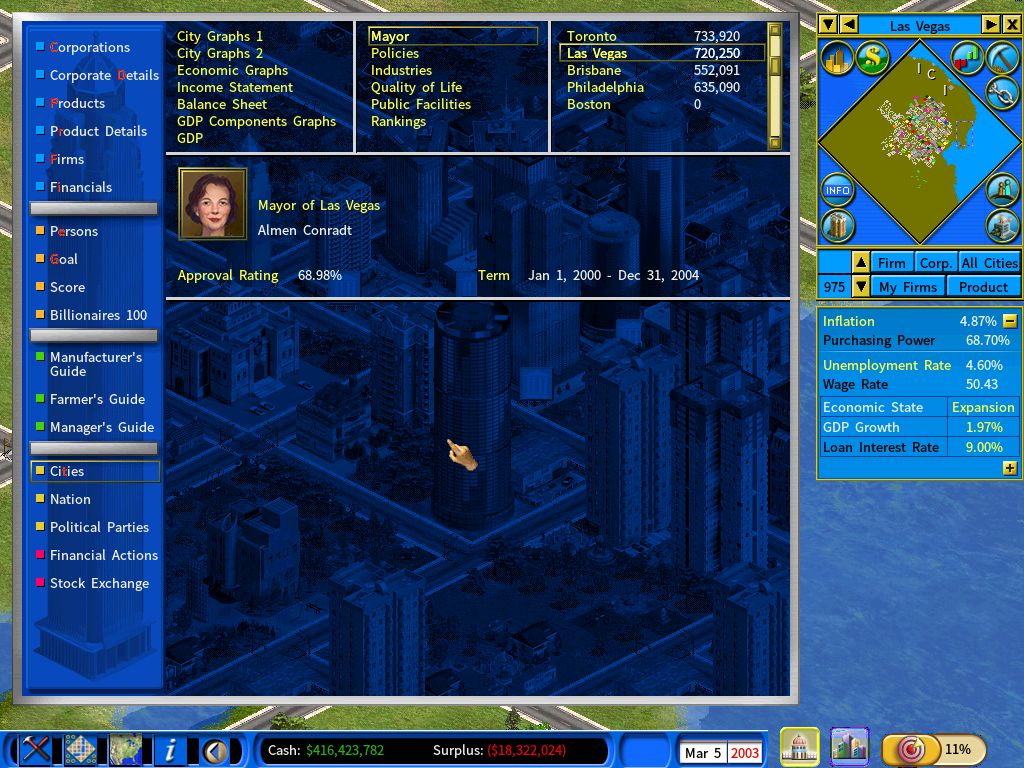
Consumer Tax Rate
Consumer taxes are charged whenever consumers spending money on goods. (Tax = Product Price X Consumer Tax Rate). When a city’s consumer tax rate is too high, consumer spending will decline. Weak consumer spending will in turn adversely affect the business sector.
When a city’s individual income tax rate is too high, it will have a negative effect on consumer spending. In addition, the “Jobs and Income” category of the Quality of Life index will suffer a drop as well.
A high corporate profit tax rate brings in greater tax revenue for the city whereas a low corporate profit tax attracts business investment.
The pay rate of unemployment benefits as a percentage of the reference salary.
When a city does not have sufficient job opportunities for new immigrants, or its public facilities cannot keep up with the demand by its growing population, the city is likely to tighten its immigration policy.
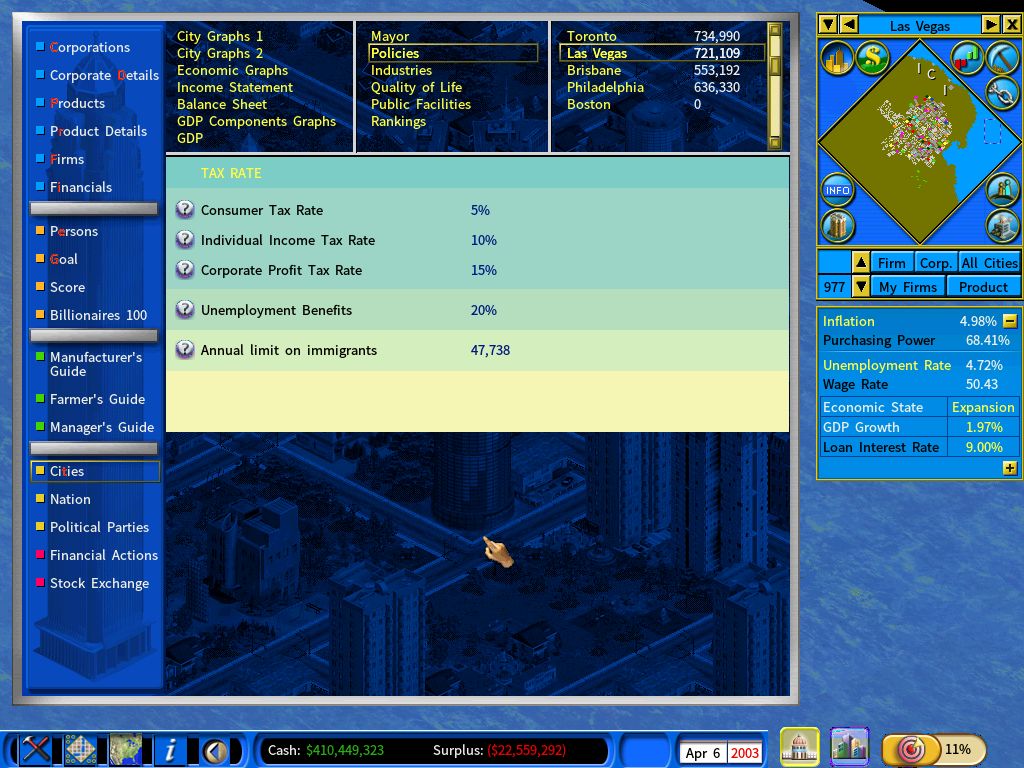
This report shows the city’s competitiveness at individual industries. The list contains the following columns:
The higher the city’s competitiveness rating, the larger number of people are employed in the local industry. When the city’s competitiveness is weak, it will have to import large volumes of goods, hurting employment in the manufacturing sector.
When the city’s competitiveness rating exceeds the global competitiveness rating, the city will be in a position to export its products to the worldwide market.
There will be export when the city’s competitiveness rating exceeds the global competitiveness rating. Strong export will improve the city’s employment significantly.
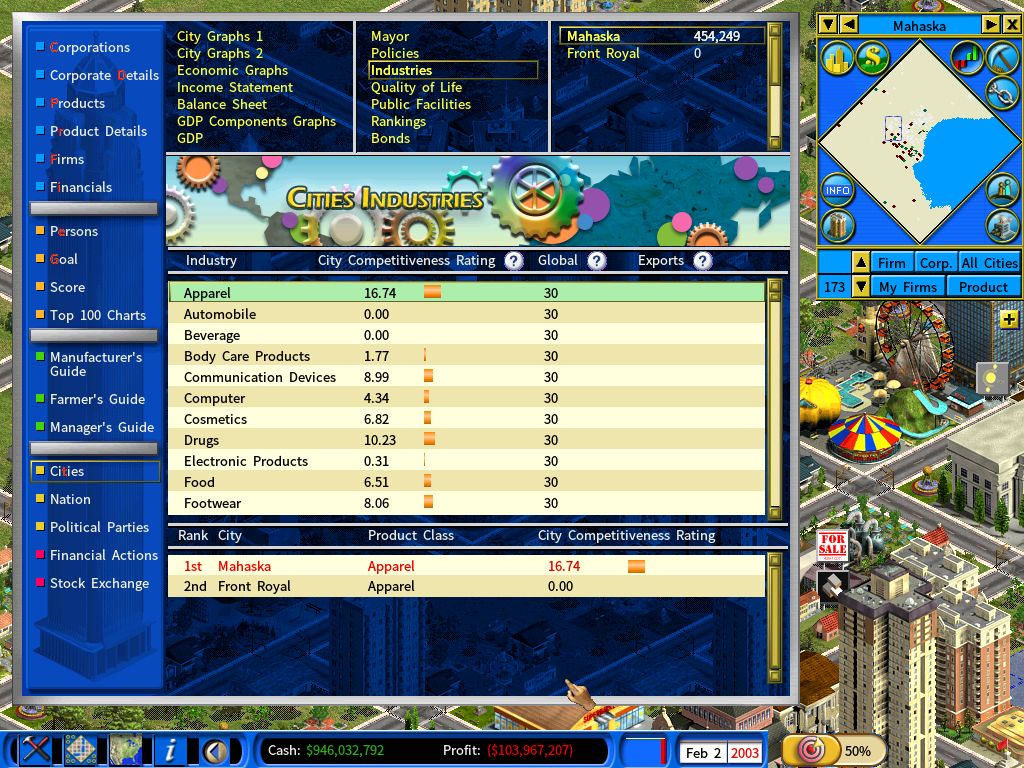
A city’s competitiveness can be increased by the following means:
1) A city’s competitiveness increases faster when there is a larger number of companies engaging in R&D or production activities in the industry in the city.
The types of business units that increase a city’s competitiveness include:
R&D units – the percentage of people in the city with university degrees will have an impact on the increase rate.
Manufacturing units and Farm Livestock Processing units – the percentage of people in the city with high school degrees will have an impact on the increase rate.
2) The city government may sponsor a university to conduct research to boost the city’s competitiveness in a specific industry.
Quality of Life
The quality of life rating of a city is determined by a number of factors, as listed below.
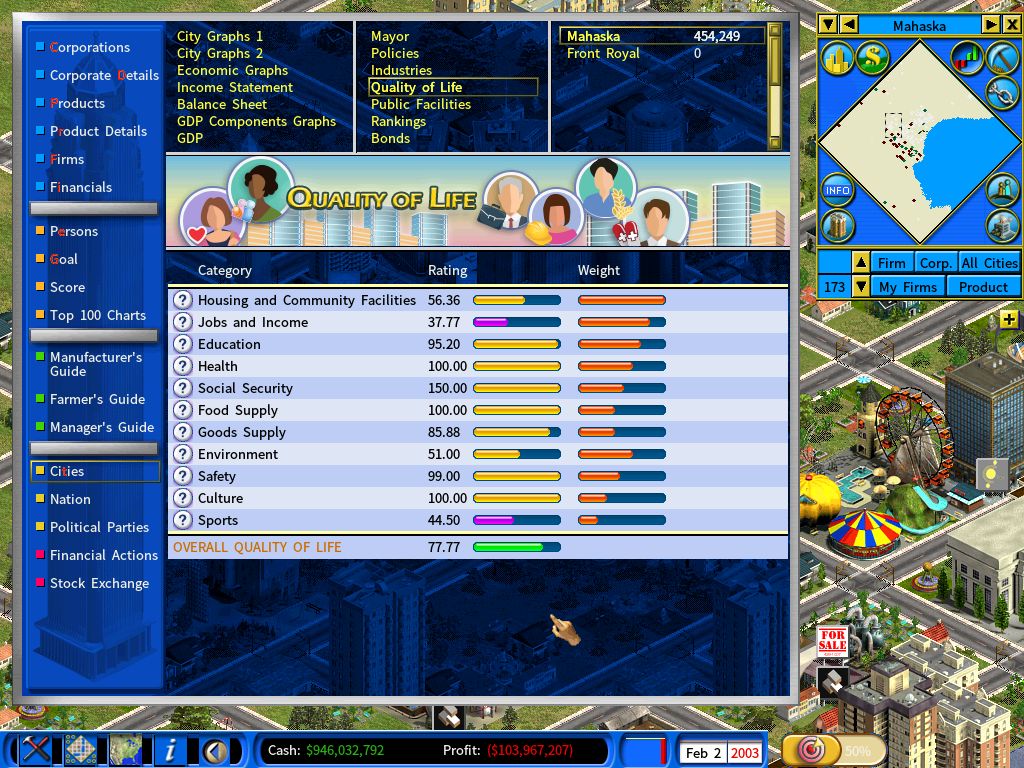
This rating is determined by the city’s Housing Supply and the average Overall Ratings of existing apartments.
This rating is determined by the city’s Wage Level, the Unemployment Rate, and the Individual Income Tax Rate.
This rating is determined by the Overall Satisfaction ratings of Schools and Universities in the city (details can be viewed on the “Public Facilities” page) and the Education Levels of the citizens (info can be viewed on the detail window of a school or a university.)
This rating is determined by the Overall Satisfaction ratings of Hospitals in the city (details can be viewed on the “Public Facilities” page).
This rating is determined by the average pay rate of Unemployment Benefits as a percentage of the reference salary in the past 3 years.
This rating is determined by the Overall Satisfaction ratings of Police Stations and Fire Stations in the city (details can be viewed on the “Public Facilities” page).
The variety and supply of food available at retail.
The variety and supply of consumer products available at retail.
Environment
This rating is determined by the Pollution level of the city. (Select Pollution mode on the mini map to see the city’s population level.)
Sports
This rating is determined by the Overall Satisfaction ratings of Sports Facilities in the city (details can be viewed on the “Public Facilities” page).
This report lists the public facilities in the city.
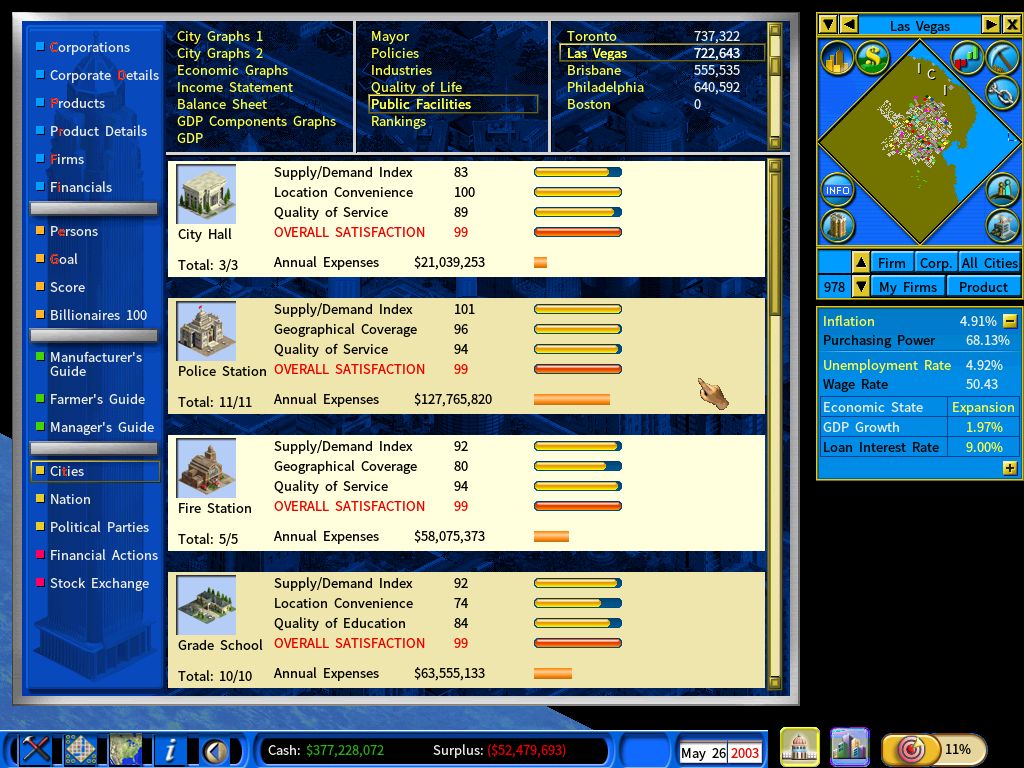
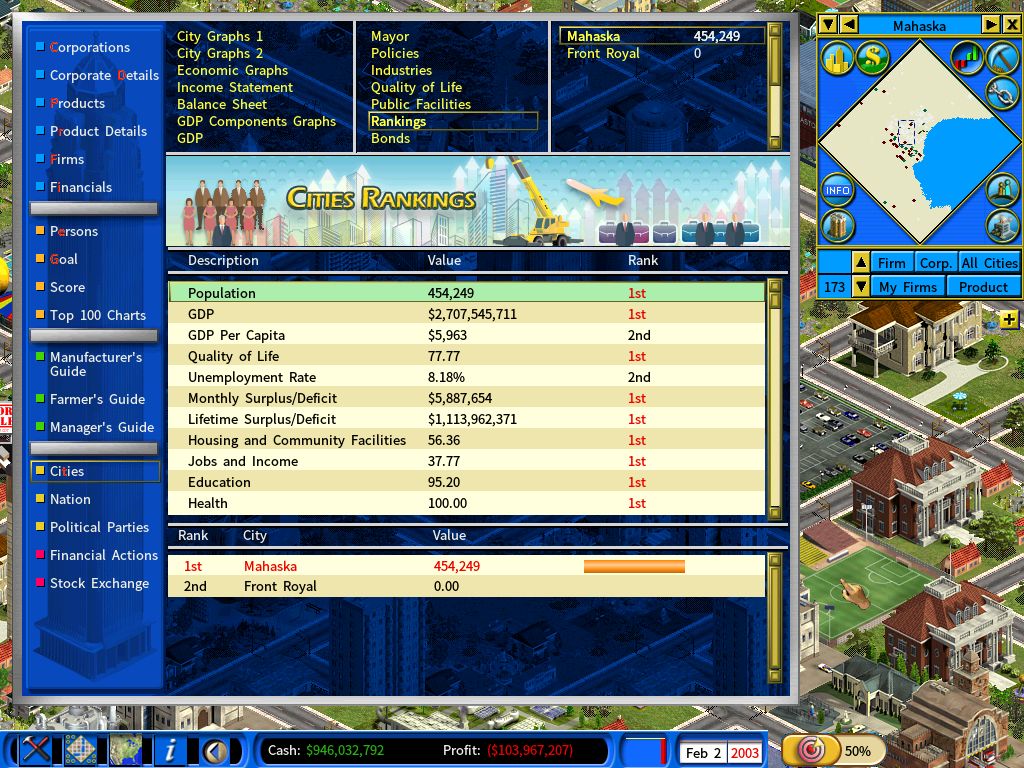
You may issue bonds to raise funds for the city government.
